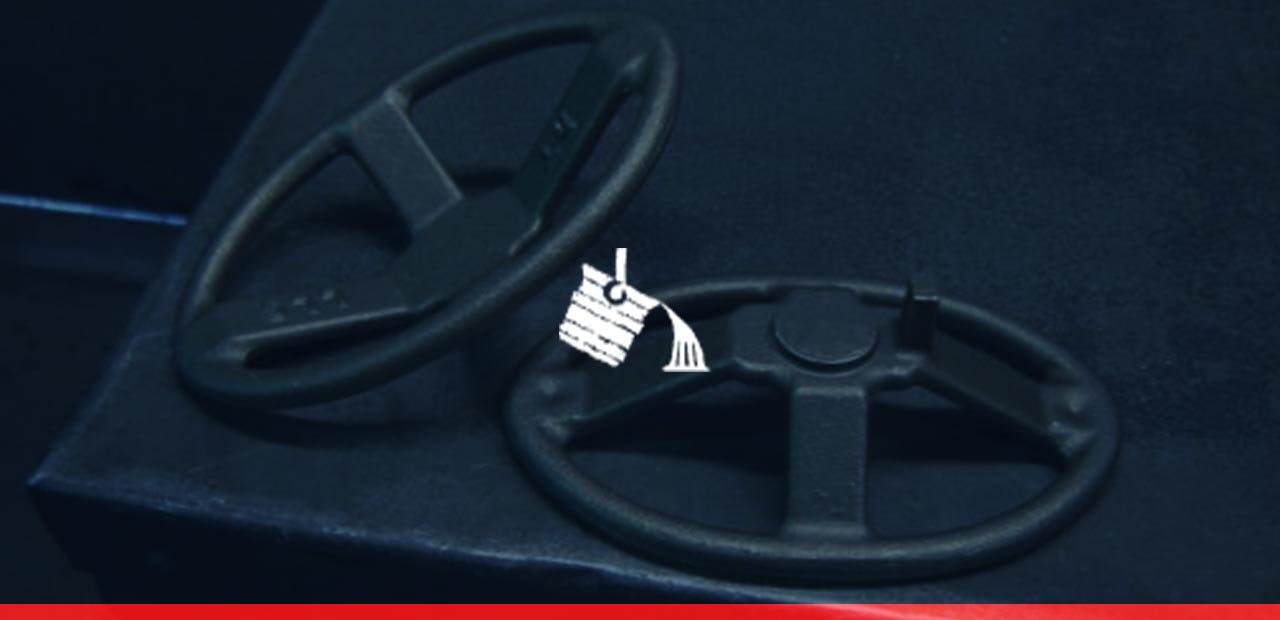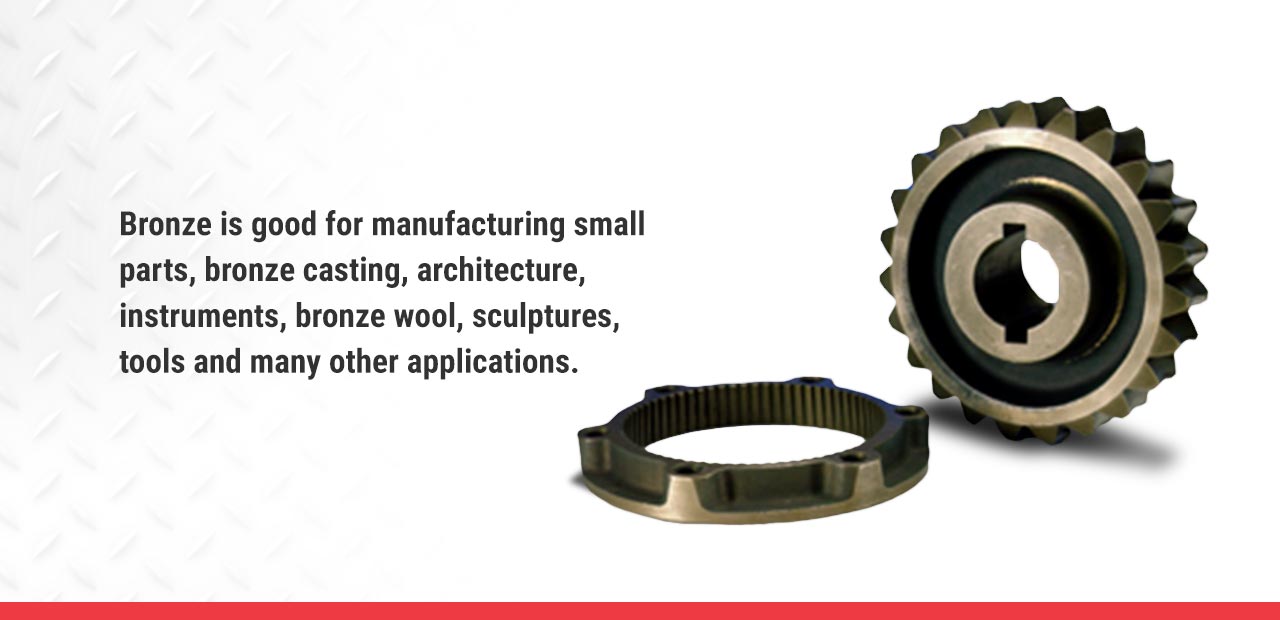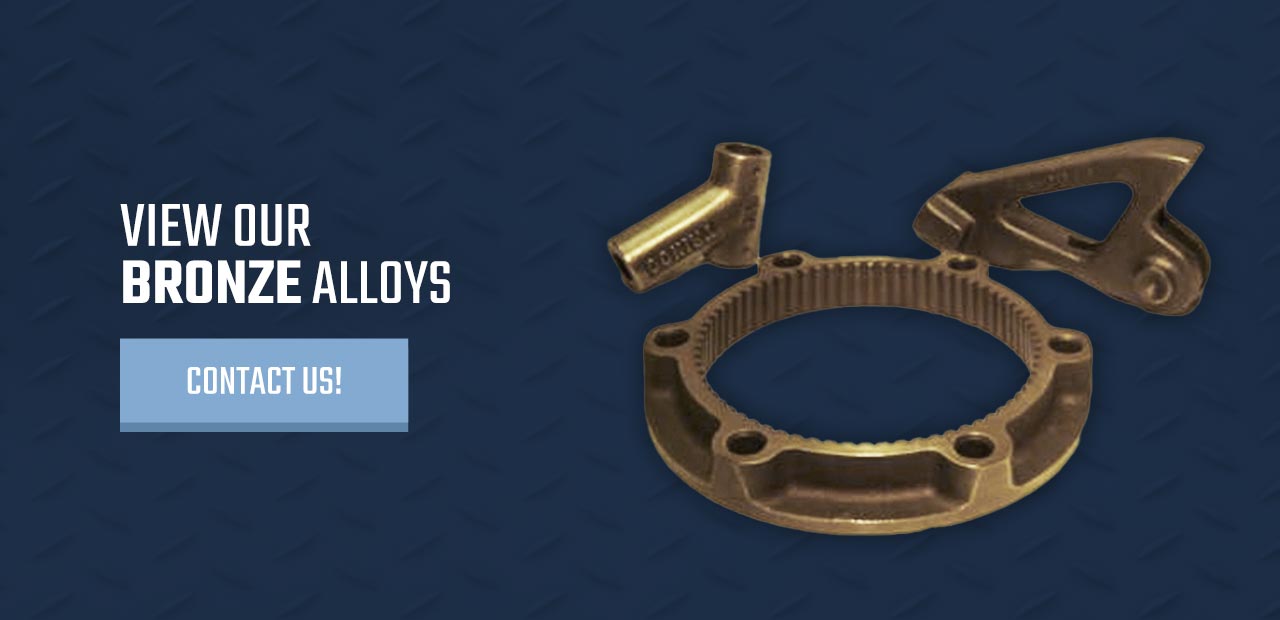Bronze is a versatile and popular metal to work with for different projects, ranging from automobile and marine parts to musical instruments and tools. It can support applications within various industries thanks to some of its properties, including corrosion resistance and low friction levels.
Let’s take a look at bronze’s properties, characteristics and uses that can support your business.
Jump to
What Is Bronze?
Bronze is an alloy made of two elements — copper and tin. However, other metals can also make up bronze, such as aluminum, nickel, zinc, phosphorus and manganese. Depending on which elements make up bronze, the alloy’s hardness, ductility, flexibility and other properties can vary.
The difference between bronze and brass is important to note. Historically, bronze was made of copper and tin, and brass was made of copper and zinc. Today, the lines are more blurred between the two, with bronze often being referred to as a type of brass. Many times, copper alloy is an inclusive term that means both brass and bronze.
Overall, bronze is a cost-effective material to work with in various industries, sold in the form of rods, tubes, sheets and ingots, which is a block of pure metal in an oblong shape used for further processing.
The Traits of Bronze and Its Characteristics
Bronze is made of copper and tin, giving it a metallic brown color. Some characteristics and properties of bronze include:
- Great surface finish
- High ductility
- Excellent dimensional precision
- High electrical and thermal conductivity
- Corrosion and metal fatigue resistance
- Expansion when hardening
- Low friction
- High melting point
- Hard elemental property
Bronze has non-sparking and non-magnetic properties compared to other common metals like steel. When you strike a piece of bronze, it won’t spark. This is extremely beneficial in applications that require working with hazardous or explosive materials on site.
While bronze is corrosion resistant, it can still oxidize. The oxidation of bronze produces a lime green patina, though you can treat the alloy to preserve its metallic brown properties. When bronze oxidizes, it forms a single layer of copper oxide, which eventually turns into copper carbonate.
Through this process, only an external layer of oxidation is present, protecting the interior metal from additional oxidation. However, if chloride is present like in seawater, something called the “bronze disease” can affect your material. This is when oxidation penetrates the entire metal, destroying it to the core.
As mentioned before, the compositions of bronze can vary, with many other elements making up its composition. While copper is the primary element and small amounts of tin are present, metals that can make up bronze include:
- Aluminum
- Nickel
- Zinc
- Arsenic
- Silicon
- Phosphorous
- Manganese
Bronze is a hard, brittle metal in which its properties and processing method relate to its specific elemental composition. Its appearance, conductivity, corrosion resistance and other properties can change depending on these other elements:
1. Aluminum Bronze
Adding aluminum to the copper-tin mixture creates a stronger type of alloy that’s even more corrosion resistant. Some other beneficial properties of aluminum include heat and electrical conductivity, low secondary heat emissions, toxicity range and high diffuse reflectivity.
2. Nickel Silver
Nickel silver is a type of bronze despite its name. It includes copper, tin and nickel, and the term “silver” describes the material’s shiny color. Its uses range from silverware, zippers and keys to musical instruments and heating coils.
3. Silicon Bronze
Silicon bronze has an easy pouring ability and can be formed into different shapes. It’s extremely corrosion resistant, even when submerged in saltwater and most acids. Silicon, copper and tin create a great surface finish and a material that has self-lubricating properties. This is ideal for bushings and bearings, especially in the automotive industry.
4. Phosphor Bronze
Adding small amounts of phosphor to bronze can make it even stronger. Phosphor increases the material’s tensile strength and yield, along with its fatigue resistance, friction coefficient and durability. Phosphor bronze is excellent for applications where metal surfaces constantly slide over each other.
5. Manganese Bronze
The addition of manganese to bronze is beneficial because it creates a material that can withstand high-load applications that operate at low speed, which is actually one of bronze’s weaknesses. On the other hand, manganese turns the alloy into a metal that you can’t treat with heat, making it necessary to use special lubrication.
With a new element like aluminum, nickel, silicon, phosphor or manganese added to bronze, unique properties arise that are perfect for specific projects. Each type also upholds a few general bronze properties, such as hardness, a high melting point and corrosion resistance.
What Is Bronze Used for?
Metal fabrication is most often associated with steel and aluminum, but there are several projects where bronze is the perfect material. Bronze is used for manufacturing small parts, bronze casting, architecture, instruments, bronze wool, sculptures, tools and many other applications. Projects ranging from automobile parts to machine designs can all be made of bronze.
1. Small Parts
Because bronze is corrosion resistant, has high strength and has a unique color, it can be used for manufacturing a variety of small parts:
- Coins
- Furniture trim
- Marine hardware
- Automobile parts
- Hardware mounts
- Springs
Bronze is especially corrosion resistant to salt and fresh water, making it a helpful choice for applications like engine parts, propellers, pumps and bells.
2. Bronze Casting
Bronze casting is a process where liquid alloy is poured into a mold and solidifies. The casting is the hardened bronze component. Bronze is easy to machine and pour when you’re working with castings to create components like pumps, valve stems, bearings and bushings for different engines. Because bronze has low-friction characteristics and is thermal resistant, it’s a dependable material in applications where the parts slide against each other.
3. Architecture
Architects can use bronze to build different structures where they want to preserve the natural or original look of the alloy. For example, bronze is a prevalent material in making various bridge components. To prevent bronze from oxidizing, you can maintain the material’s raw finish by oiling, polishing or using a special lacquer.
4. Instruments
Because of bronze’s durability and timbre properties, manufacturers prefer to use it when making bells, cymbals and other musical instruments like saxophones. Bronze can also be used for the windings of nylon and the steel strings used in guitars and pianos to produce a warmer sound compared to other metals.
5. Bronze Wool
Used as an alternative to steel wool, bronze wool doesn’t shed or leave stains on wood. You can polish and sand metal surfaces and wood, and it’s ideal for construction, industrial and marine applications.
6. Sculptures
Artists use bronze to form sculptures. It’s a preferred metal for sculpting because it expands before setting, which allows the more intricate details to come to life in a sculpture. As it’s cooling, bronze also constricts, making the mold easy to remove.
7. Tools
Tools like axes, hammers, wrenches and mallets can create sparks when struck on flammable materials, causing safety hazards within your work zone. However, because bronze is a non-sparking and non-magnetic alloy, it’s an increasingly common material used to manufacture various tools to ensure a safe environment when working with other flammable or explosive objects.
Bronze casting is one of the most popular uses of this alloy, but it can also be used for any type of fabrication process. Consider your application and the properties of bronze you desire most, like corrosion resistance, thermal conductivity and ductility.
View Our Bronze Alloys
Warner Brothers Foundry Company is a full-service bronze casting foundry that also works with materials like aluminum and brass. We deliver top-quality, non-ferrous castings that exceed expectations and are your one-stop shop for casting, testing and prototypes.
Through superior craftsmanship, quality and on-time delivery, Warner Brothers has a reputation for doing things right. We use customized, top-of-the-line materials and provide testing to ensure we exceed your standards. By using a unique air-set sand technique that results in better stability and mechanical properties, we help you save money from wasted time and returns on a bad casting.
Check out our bronze spec sheets to learn more about different bronze alloys or contact a Warner Brothers representative for any of your bronze casting needs.




